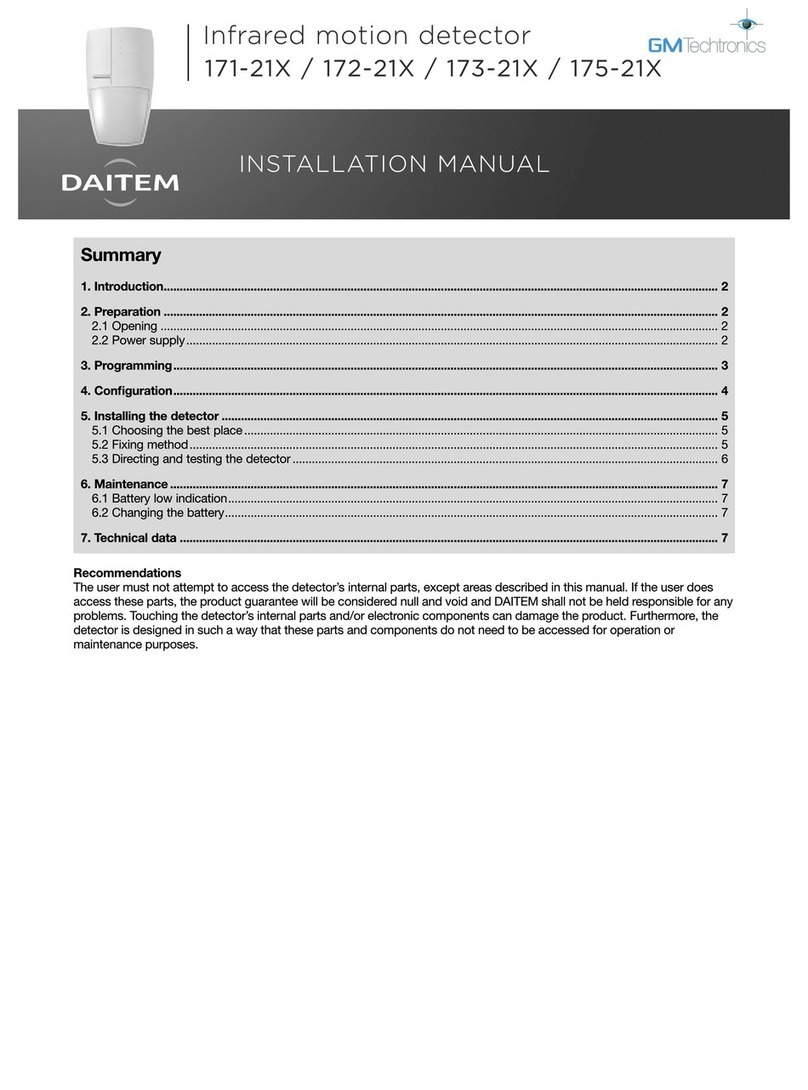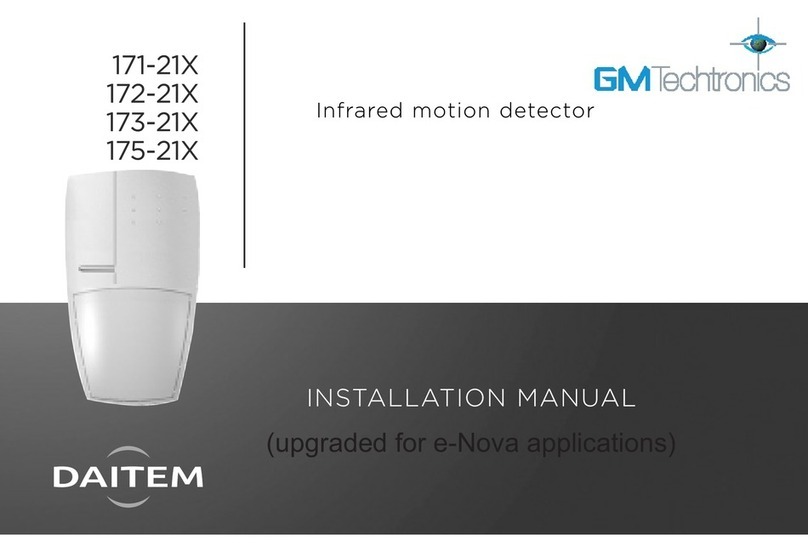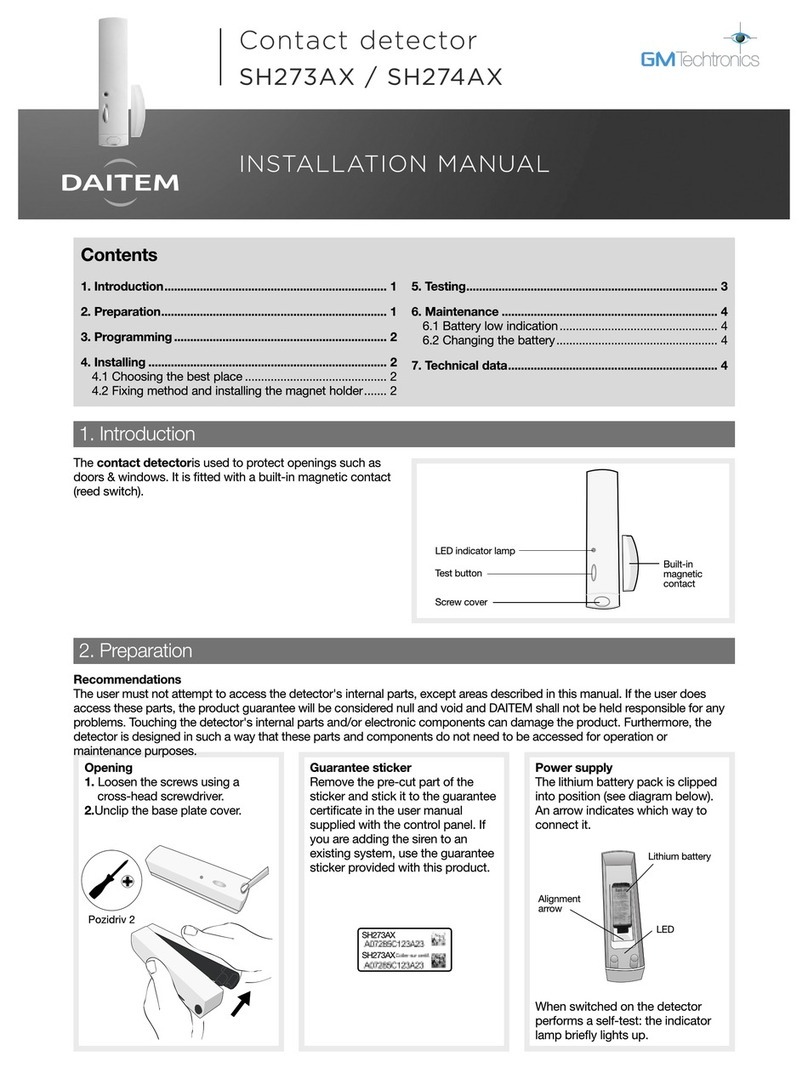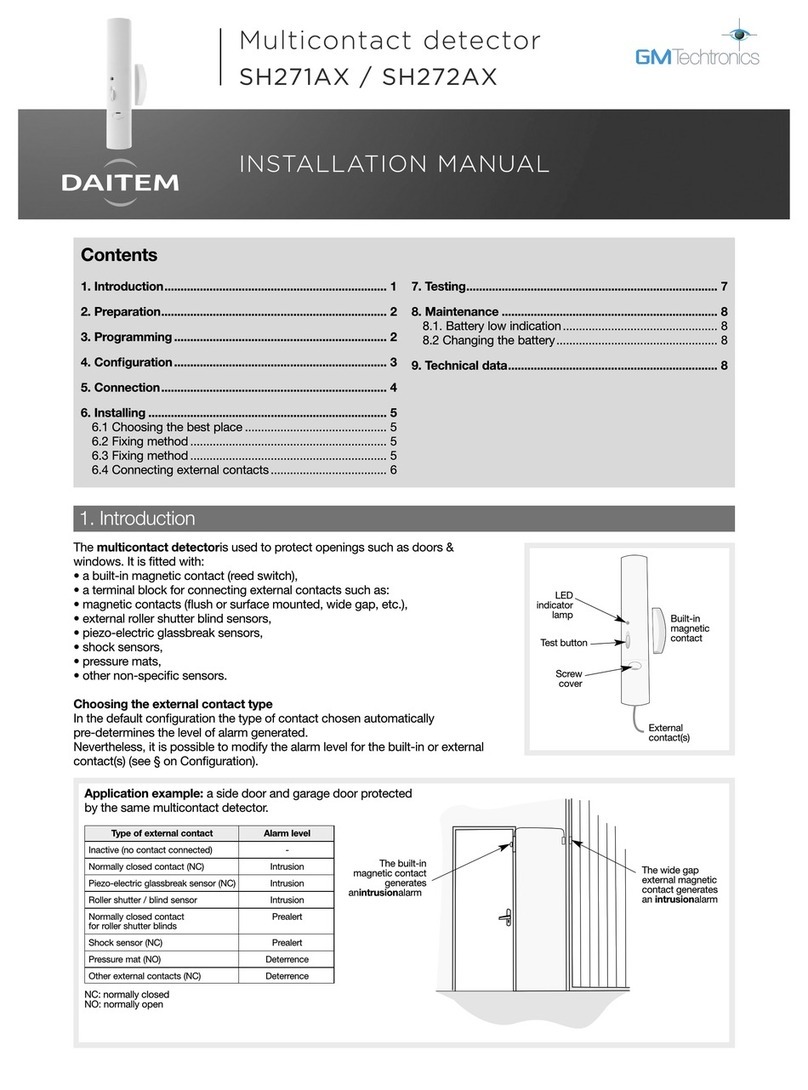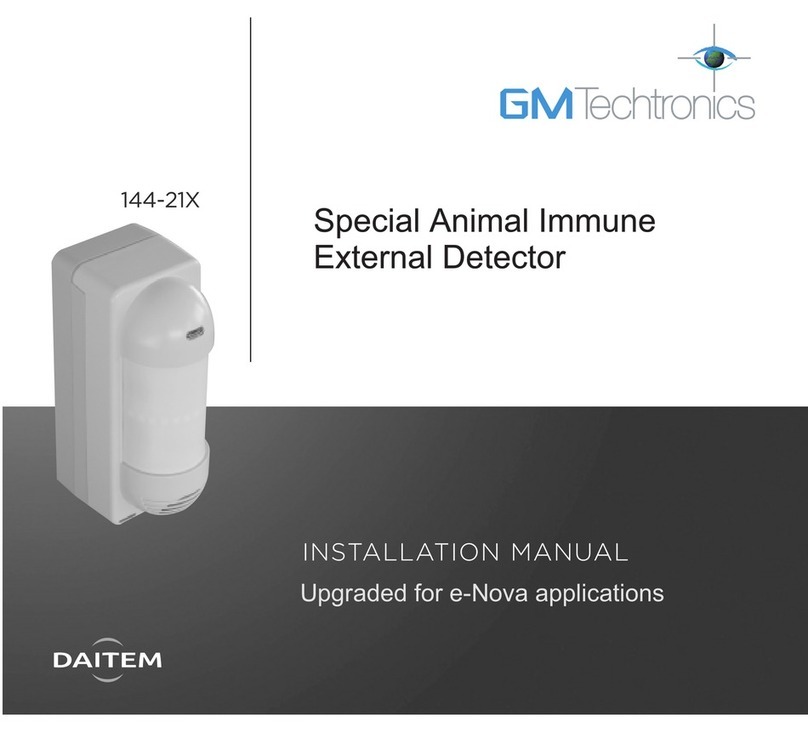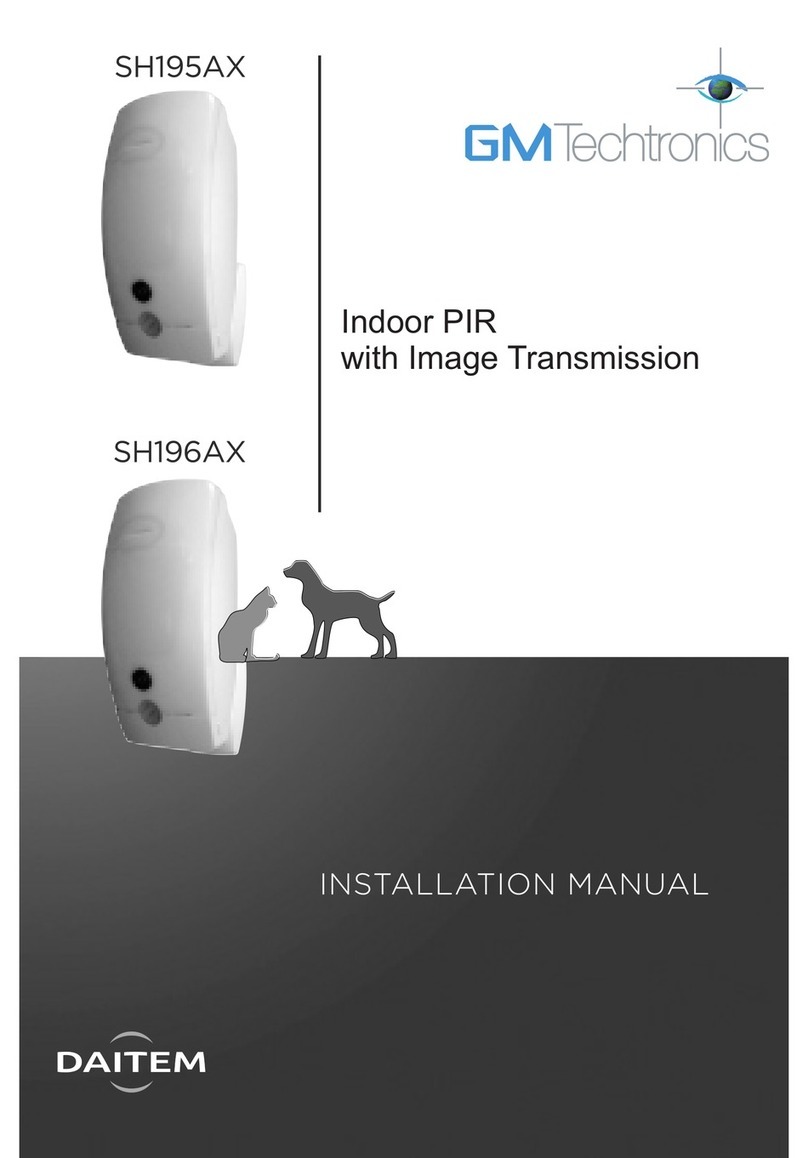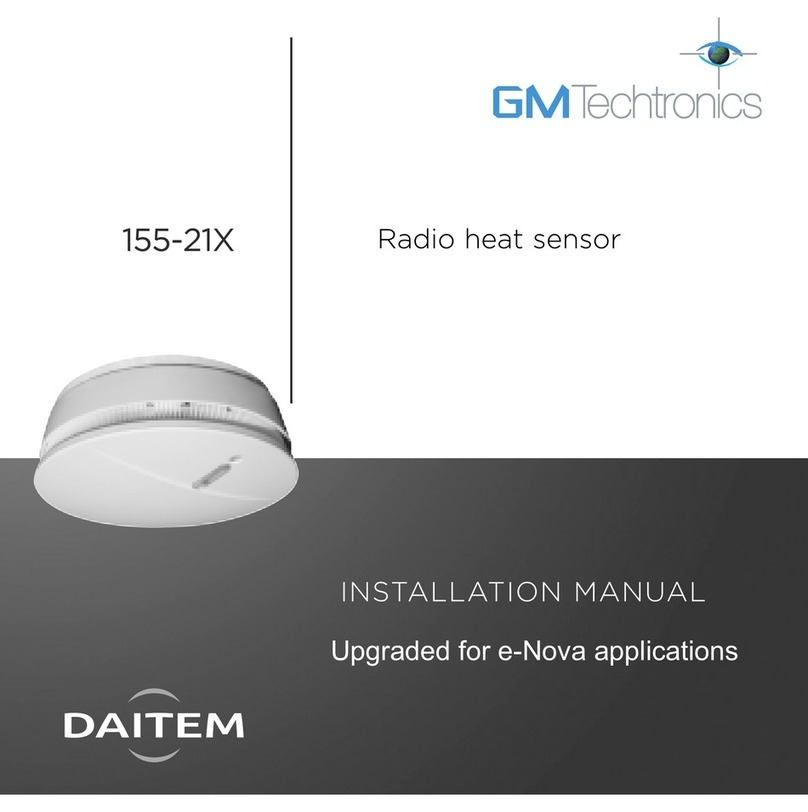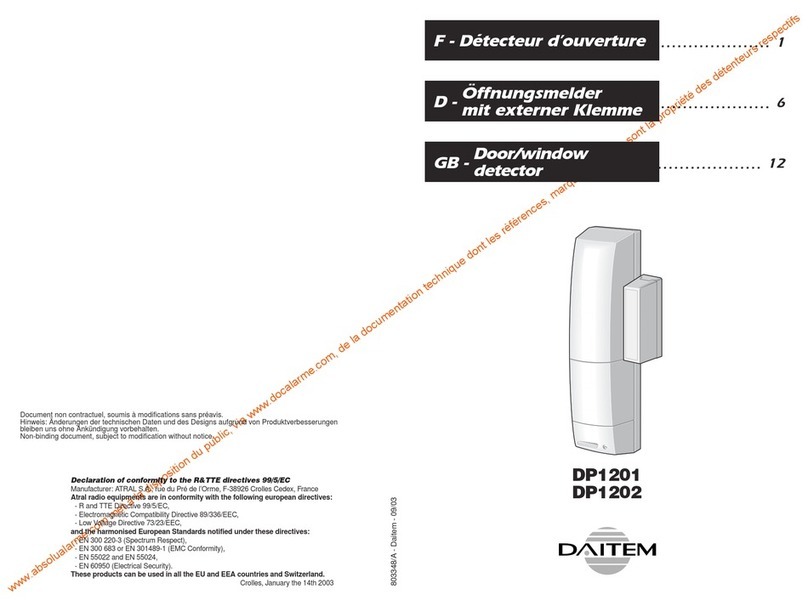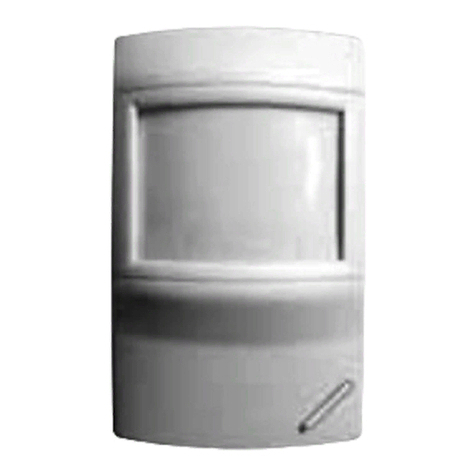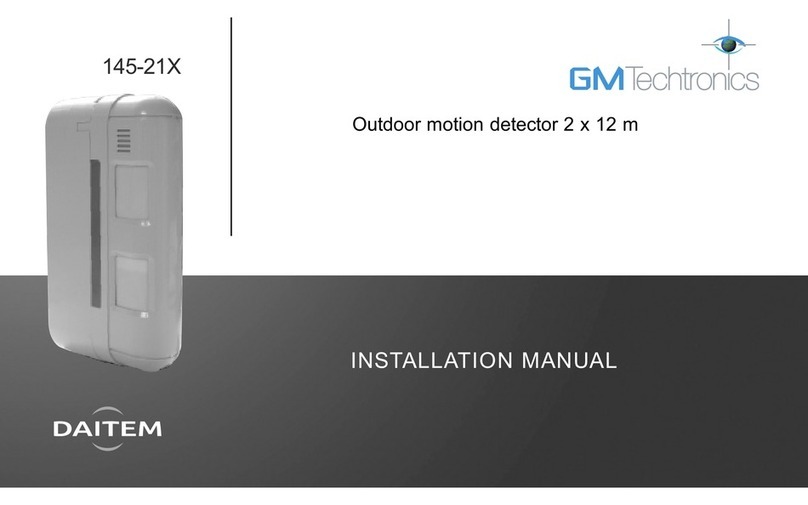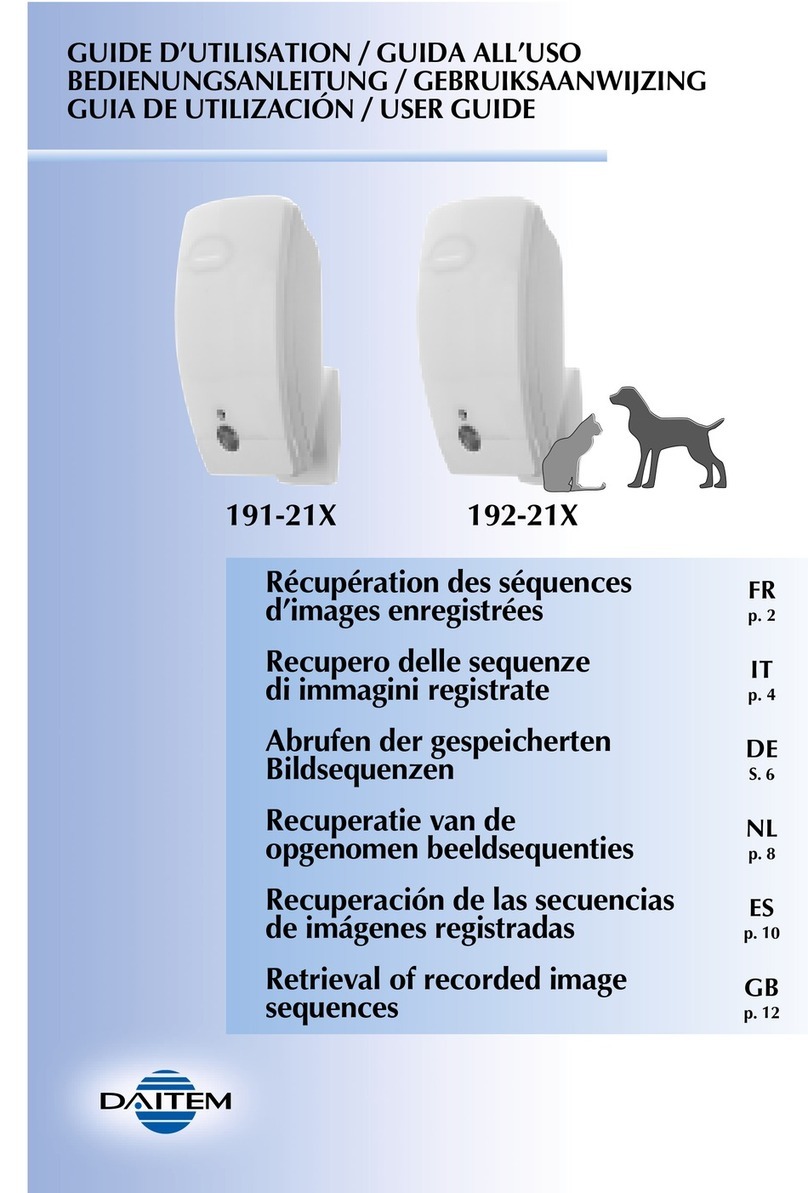GB
16
The outdoor anti-masking detector has been specially designed to
detect intruders before they break in and is able to tell the difference
between a human being and an animal.
Its anti-masking function allows it to detect attempts to mask
detection.
The detector has 2 detection beams (upper and lower), both of which
must be broken simultaneously for the alarm to be triggered. The
detection process prevents the device from triggering false alarms
due to the sun or the headlights of a car.
urthermore, a temperature compensation system automatically
increases and backs up detection sensitivity.
Its compact size, narrow horizontal protection, smaller detection
range and anti-masking function make it an ideal device for
protecting façades, balconies, various types of windows and any
other access points.
Contents
1. Introduction ........................................................................................... 16
2. Preparation ............................................................................................ 17
2.1 Opening the detector........................................................................ 17
2.2 Description ........................................................................................ 17
2.3 Power supply .................................................................................... 18
3. Recognition programming................................................................... 19
4. Parameter-setting................................................................................. 20
5. Installation precautions........................................................................ 21
6. Installing the detector .......................................................................... 22
6.1 Testing the radio link......................................................................... 22
6.2 ixing the detector in place .............................................................. 22
7. Detection settings and configuration................................................. 23
7.1 Detection range................................................................................. 23
7.2 Adjusting the detection angle horizontally ....................................... 25
7.3 Setting the operating options ........................................................... 25
7.4 Anti-masking function....................................................................... 26
8. Testing operation .................................................................................. 27
8.1 Testing the detection zone................................................................ 27
8.2 Performing a real test........................................................................ 27
9. Maintenance.......................................................................................... 28
9.1 ault indications................................................................................ 28
9.2 Changing the batter.......................................................................... 28
10. Technical data ..................................................................................... 29
1. Introduction
Recommendations
The user must not attempt to access the detector’s internal parts, except areas described in this manual. If the user does access these parts,
the product guarantee will be considered null and void and DAITEM shall not be held responsible for any problems. Touching the detector’s
internal parts and/or electronic components can damage the product. urthermore, the detector is designed in such a way that these parts
and components do not need to be accessed for operation or maintenance purposes.
IMPORTANT
• Some functions are only available with control panel version 2.0.0 or
later (enter ) on the control panel keypad
to check the version).
• Operating differences with respect to former ranges are described in
the compatibility booklet available in the Daitem Installers section at
www.daitem.co.uk.

